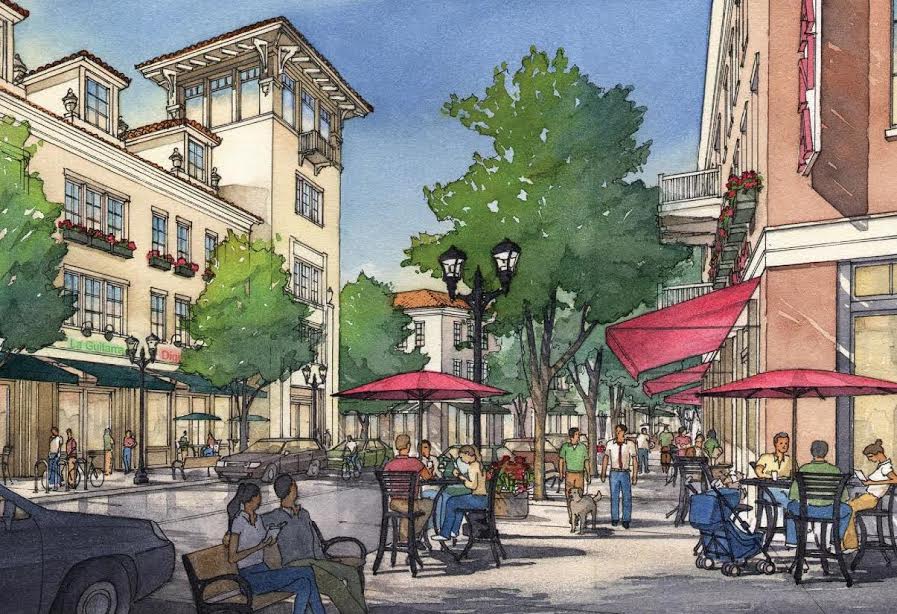The City of El Paso grew up around rail and the streetcar but, like most American cities, it was remade for the automobile and sprawled far into the countryside in the 20th Century. Now, new developments are focused on people again while the city is reoriented toward transit, walking, public places, and mixed-use.
Plan El Paso revamped zoning laws and redirected investment across this city of 800,000, the largest on the Texas-Mexico border.
In four years after the plan was adopted, the city built a new baseball stadium downtown, created parks and renovated public spaces—including downtown’s San Jacinto Plaza—completed future land-use plans based on the SmartCode, and streamlined permitting for developers. More than 100 city officials have received formal New Urbanism training—an initiative that is helping to change the culture of city hall.

“Based on the Plan, the El Paso Planning Department is making strides toward a more livable, pedestrian place complete with mixed-use zoning, street trees and public transit,” says Geoffrey Wright, chairman of the City Plan Commission. “It is a goal of the Plan Commission to densify our suburban city, which is like so many other post-automobile western cities.”
The plan simply “lays the groundwork for how to create … a healthier city and region,” says Michael Kelly, director of programs for Paso Del Norte Health Foundation.
The plan immediately spurred development. New mixed-use developments, many of them conversions of older buildings, are underway downtown. “During the planning process, a 30-acre dead mall site in Northeast El Paso was redesigned as a mixed-use walkable neighborhood anchored by a new transit terminal. The SmartCode was applied to the site. The transit terminal will be a terminus for one of the city’s four new bus rapid transit (BRT) lines emanating from Downtown El Paso.” The city received a $10.3 million federal grant to build the terminal; construction is slated to begin in 2016.

The town center slated for the site of the defunct Northgate Mall, connected to the Bus Rapid Transit system. Source: Dover, Kohl & Partners
The first BRT line began operating in October, 2014. The 8.6-mile route with 22 stations offers buses every 10 minutes during peak hours. The second line, 14.5 miles, will be operational in 2016.
Partly as a result of this plan, written by Dover, Kohl & Partners, the El Paso City Council adopted a 5-mile-long streetcar plan, and the Texas DOT has approved $97 million in funding. “After a 40-year hiatus, streetcars will again be part of El Paso’s identity.”
Top Photo: Plan El Paso, 2015 CNU Charter Award Winner. Typical El Paso infill designed according to the SmartCode. Source: Photo courtesy of Source: Downtown Development News.
Plan El Paso El Paso, Texas
Year
2012 (Code and plan adopted)
